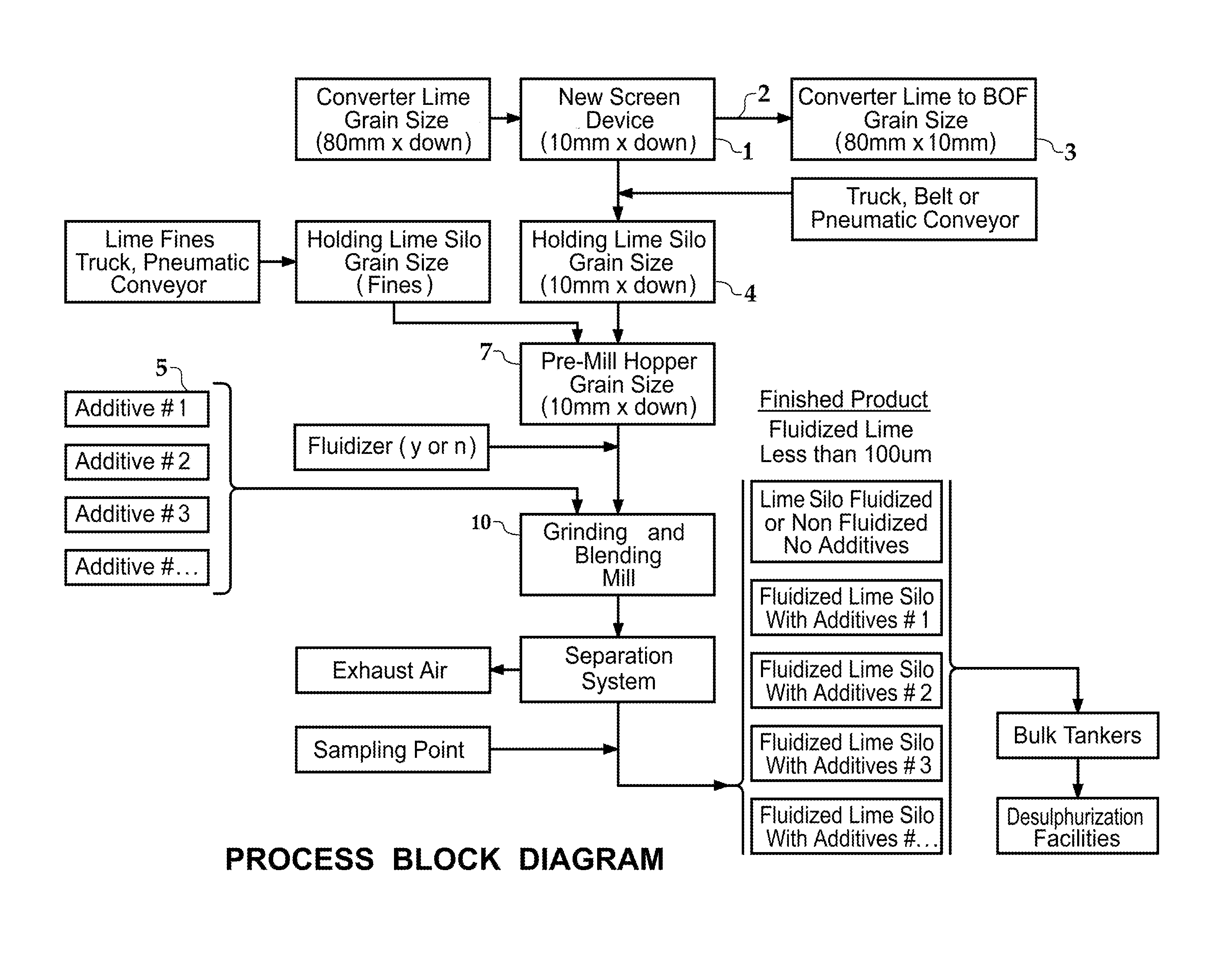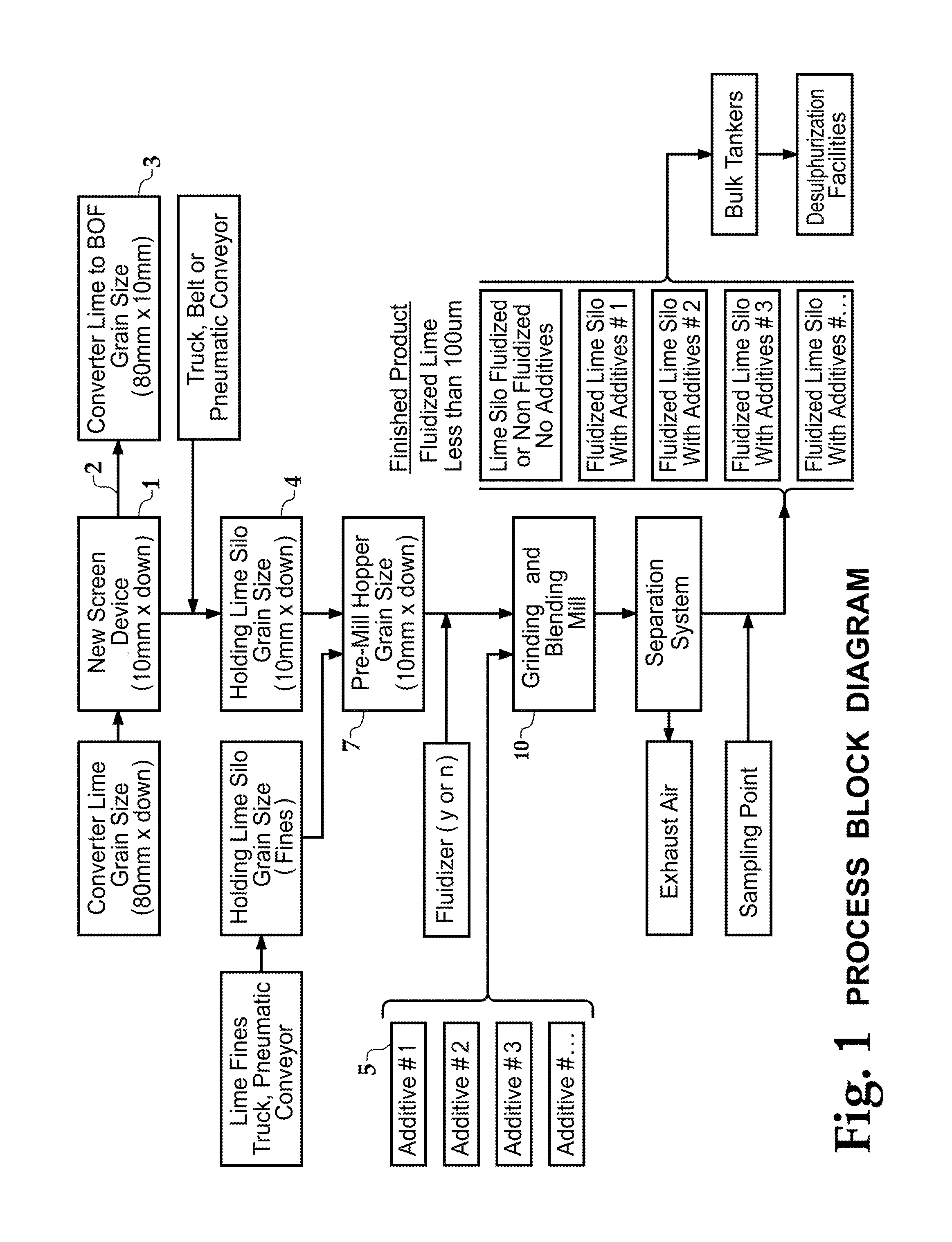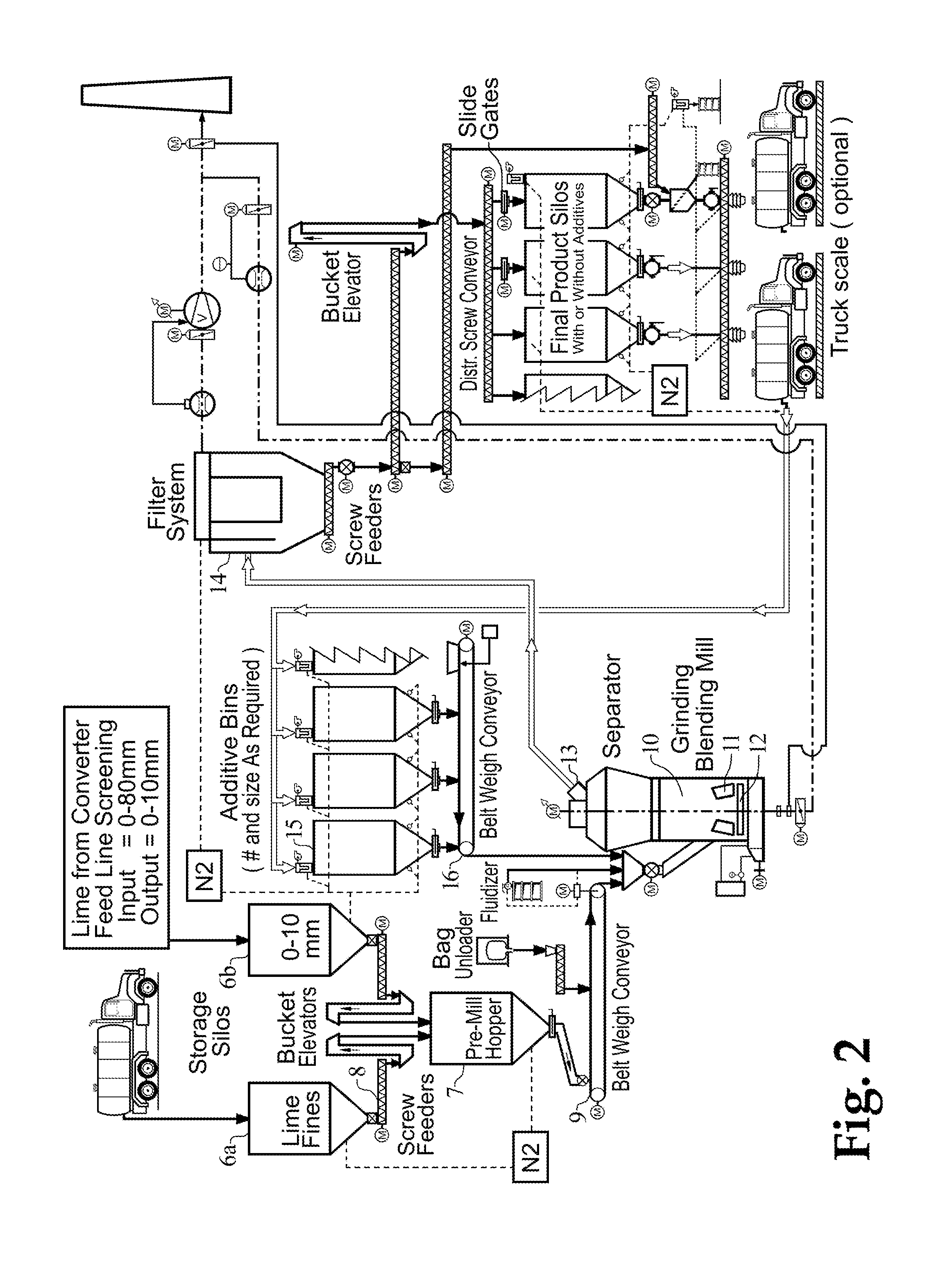Conversion of troublesome lime fines to useful high quality fluidized lime in feeding flux lime to a BOF converter
a technology of fluidized lime and troublesome lime, which is applied in the direction of process efficiency improvement, grain treatment, chemistry apparatus and processes, etc., can solve the problems of serious environmental and maintenance problems, material seriously overloaded the bag house and wet scrubber, and the cost of the facility is serious, so as to reduce the production time of loss, reduce the environmental problem, and reduce the loss of material. to waste
- Summary
- Abstract
- Description
- Claims
- Application Information
AI Technical Summary
Benefits of technology
Problems solved by technology
Method used
Image
Examples
Embodiment Construction
Description of the Screening of the 80 mm×Down Flux Lime
[0015]The processing of the high quality fluidized lime begins with the screening of the 80 mm×down converter flux lime material, FIG. 1 shows the Process Block Diagram of the entire screening and grinding operation. A complete description of the lime grinding technology is discussed in the section on FLUIDIZED LIME PRODUCTION FROM 10 MM×DOWN FINES. A 10 mm sized screen 1 is inserted into the 80 mm×down flux lime feed stream to remove the 1×down lime fines. This then produces an 80 mm×10 mm lime feed stream 2 going to the converter 3. The elimination of these 10 mm×down fines significantly reduces the majority of the problems mentioned elsewhere herein. The cost savings associated with the elimination of these problems are significant. Screen 1 is a vibratory screen inserted into a belt conveyor system moving the converter lime (80 mm×down flux lime) to the BOF converter 3; the larger screened fraction (80 mm×10 mm) continues t...
PUM
| Property | Measurement | Unit |
|---|---|---|
| size | aaaaa | aaaaa |
| size | aaaaa | aaaaa |
| size | aaaaa | aaaaa |
Abstract
Description
Claims
Application Information
 Login to View More
Login to View More - R&D
- Intellectual Property
- Life Sciences
- Materials
- Tech Scout
- Unparalleled Data Quality
- Higher Quality Content
- 60% Fewer Hallucinations
Browse by: Latest US Patents, China's latest patents, Technical Efficacy Thesaurus, Application Domain, Technology Topic, Popular Technical Reports.
© 2025 PatSnap. All rights reserved.Legal|Privacy policy|Modern Slavery Act Transparency Statement|Sitemap|About US| Contact US: help@patsnap.com



